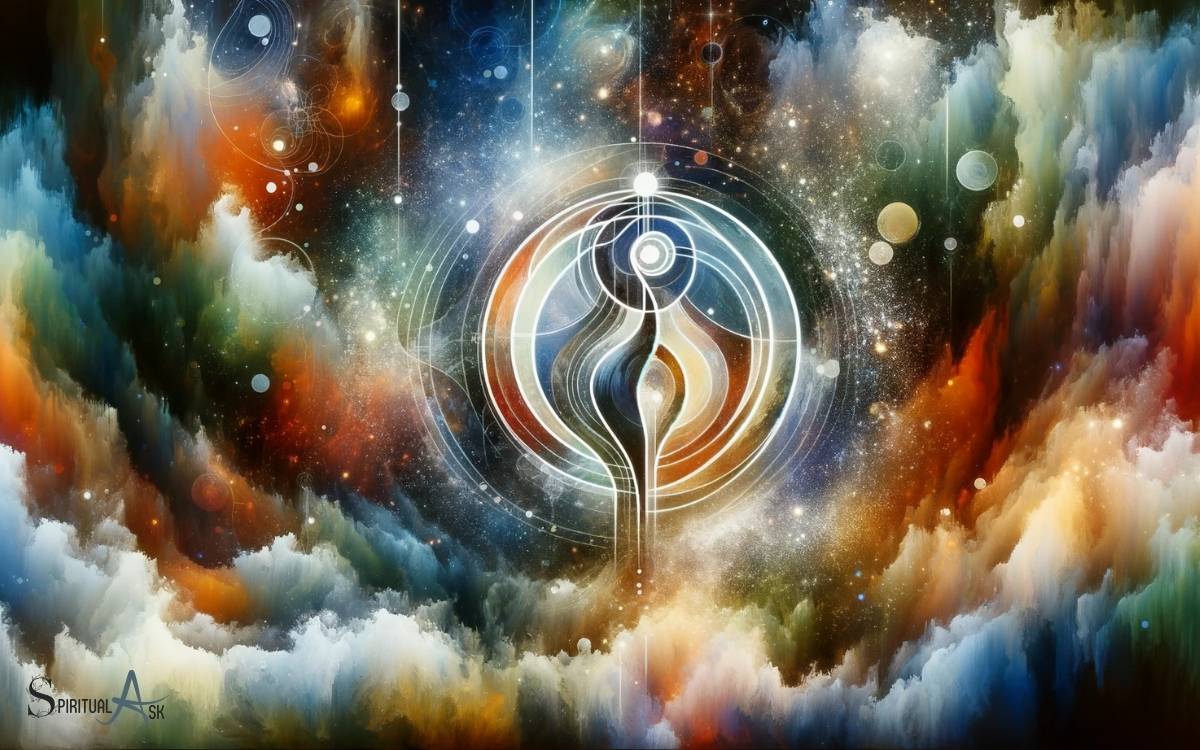What Is the Symbol of Spirituality? Purity, Enlightenment!
The symbol that most universally represents spirituality is the lotus flower. This symbol transcends various cultures and religions, embodying purity, enlightenment, self-regeneration, and rebirth.
Spirituality often involves the search for meaning in life and the quest for a connection to something bigger than oneself, which can be represented through various symbols.
Among these, the lotus flower stands out for its wide-reaching significance:
Other symbols include the Om symbol in Hinduism, the cross in Christianity, the crescent moon in Islam, the Tree of Life in various mythologies, and the Yin and Yang in Taoism, each reflecting different aspects and paths of spiritual journeys.
The lotus flower’s striking beauty and ability to thrive in murky environments make it a powerful emblem for spiritual growth and resilience.

Key Takeaway
Origins of Spiritual Symbols
I believe they have diverse cultural and historical roots that contribute to their significance. Throughout history, various civilizations have used symbols to represent their spiritual beliefs and practices.
From the ankh in ancient Egypt symbolizing life to the lotus flower in Hinduism representing purity and enlightenment, these symbols derive from rich cultural traditions.
Additionally, many symbols have evolved from nature, such as the use of animals like the wolf or the bear to embody different spiritual qualities in Native American traditions.
Moreover, the historical context in which these symbols emerged, such as during times of persecution or cultural exchange, adds layers of meaning to their significance.
Understanding the origins of these spiritual symbols allows us to appreciate the depth of their cultural and historical importance.
Universal Symbols Across Cultures
Universal spiritual symbols serve as a common language across diverse cultures, transcending geographical boundaries and connecting individuals through shared meanings and interpretations.
These symbols, such as the lotus flower, the tree of life, the sun, and the moon, are recognized and revered across various traditions and belief systems.
For example, the lotus flower symbolizes purity and enlightenment in Buddhism, while it represents rebirth and creation in ancient Egyptian mythology.
The tree of life is a universal symbol found in Christianity, Islam, and various other faiths, symbolizing growth, interconnectedness, and the cycle of life.
The sun and moon are also prevalent spiritual symbols, often representing masculine and feminine energies, light and darkness, and the passage of time.
Understanding these universal symbols enriches our appreciation for the interconnectedness of spiritual beliefs worldwide.
Symbolism in Religious Traditions
In my experience, symbolism in religious traditions is a rich and complex aspect of spiritual expression. Symbols often carry deep meanings and serve as a way to convey profound spiritual concepts and beliefs.
Here are some common symbols and their meanings in various religious traditions:
| Symbol | Religious Tradition | Meaning |
|---|---|---|
| Cross | Christianity | Sacrifice and salvation |
| Om | Hinduism | The sound of the universe |
| Star and Crescent | Islam | Unity and faith |
| Menorah | Judaism | Light and divine presence |
Understanding these symbols can provide insight into the core values and beliefs of different religious traditions, fostering greater appreciation and respect for diverse spiritual practices.
Nature as a Spiritual Symbol
As a symbol of spirituality, nature holds profound significance in many religious and spiritual traditions.
For me, nature represents a direct connection to the divine. When I immerse myself in the natural world, I feel a sense of peace and interconnectedness that transcends the physical realm.
Many spiritual practices emphasize the importance of connecting with nature to achieve spiritual enlightenment. The beauty and harmony found in natural elements such as water, mountains, and forests are often seen as manifestations of the divine.
Across various cultures, trees, animals, and celestial bodies are revered as spiritual symbols, representing the cycle of life, the interconnectedness of all living beings, and the presence of a higher power.
Nature serves as a reminder of the sacredness and beauty of the world around us, offering a gateway to deeper spiritual understanding.
Sacred Geometry and Spiritual Symbolism
I’m fascinated by the symbolism found in geometric shapes and the spiritual significance they hold. It’s intriguing to explore the deep connection between geometry and spirituality, and how these symbols have been used across different cultures and traditions.
Understanding the spiritual meaning behind these sacred geometries can provide meaningful insights into the nature of existence and our place in the universe.
Symbolism in Geometric Shapes
Exploring the significance of geometric shapes in spirituality reveals profound connections between form and meaning. In sacred geometry, each shape holds symbolic value.
The circle, representing unity and eternity, is found in mandalas and sacred architecture worldwide. Triangles, with their three sides, symbolize the trinity and balance. The square embodies stability and the four elements.
The hexagon, with its six equilateral sides, signifies harmony and equilibrium. These shapes are not only aesthetically pleasing but also hold deep spiritual meanings, serving as a visual language for understanding the divine.
Understanding the symbolism in geometric shapes allows for a deeper appreciation of the spiritual significance of symbols, shedding light on the interconnectedness of various spiritual traditions and their use of common visual elements.
Spiritual Significance of Symbols
Sacred geometry and spiritual symbolism play a significant role in conveying deep spiritual meanings through visual language.
Symbols like the mandala, the flower of life, and the Sri Yantra are not just aesthetically pleasing shapes; they hold profound spiritual significance.
For instance, the mandala represents the universe and the idea that life is never-ending, while the flower of life symbolizes the interconnectedness of all living things. These symbols serve as a reminder of the divine and our connection to something greater than ourselves.
By contemplating these sacred geometric shapes, individuals can access higher states of consciousness and gain a deeper understanding of spiritual truths.
The intricate patterns and symmetrical designs within sacred geometry and spiritual symbolism provide a visual gateway to accessing the spiritual realm and experiencing a sense of oneness with the universe.
Connection Between Geometry and Spirituality
As a practitioner of spirituality, I have found that the connection between geometry and spirituality is a fascinating and deeply meaningful aspect of my journey.
- Sacred Geometry: The study of shapes, patterns, and forms that are considered sacred across various cultures and religions. These geometrical forms are believed to have spiritual significance and are often found in religious art, architecture, and symbolism.
- Universal Patterns: Many spiritual traditions believe that certain geometric patterns, such as the Flower of Life or the Sri Yantra, represent universal principles and the interconnectedness of all things.
- Meditative Tools: Geometric shapes, such as mandalas, are used as meditative tools to aid in focusing the mind and facilitating spiritual growth.
Understanding the profound relationship between geometry and spirituality has enriched my practice and deepened my connection to the divine. It’s a reminder that spirituality is deeply woven into the fabric of existence, transcending language and culture.
Symbols of Inner Peace and Harmony
Seeking inner peace and harmony is a fundamental aspect of spiritual growth. For me, the symbol of a lotus flower encapsulates this quest for inner tranquility. The lotus begins its life in muddy waters, yet it emerges pure and beautiful.
This process mirrors the journey towards inner peace and harmony. The unopened bud represents the potential within each of us, while the blooming flower signifies the unfolding of our spiritual growth.
Additionally, the serene and untouched nature of the lotus as it floats on the water’s surface embodies a sense of calm and detachment from worldly disturbances.
Its symbolism reminds me to strive for inner peace, even amidst life’s challenges, and to remain unperturbed by external chaos. The lotus serves as a powerful reminder of the beauty that can emerge from within, despite the muddy waters of life.
Modern Interpretations of Spiritual Symbols
In my view, many modern interpretations of spiritual symbols demonstrate a universal appeal and relevance, reflecting the evolving nature of our spiritual journeys.
- Inclusivity: Modern interpretations of spiritual symbols often strive to be inclusive of diverse cultural and religious perspectives, acknowledging the interconnectedness of humanity’s spiritual experiences.
- Adaptability: These interpretations are often adaptable to contemporary contexts, making them more accessible and applicable to the challenges and opportunities of modern life.
- Empowerment: They frequently emphasize the individual’s capacity for personal growth, transformation, and self-discovery, resonating with people seeking meaning and fulfillment in their lives.
The Power of Personal Spirituality
My personal spirituality has been a guiding force in shaping my beliefs and values. It provides me with a sense of purpose and connection to something greater than myself.
Through personal spiritual practices such as meditation, self-reflection, and acts of kindness, I have found inner peace and strength to navigate life’s challenges.
This inner strength has also influenced my interactions with others, leading me to approach relationships with empathy and understanding.
Additionally, my spirituality has instilled in me a deep respect for nature and all living beings, prompting me to live more sustainably and to contribute positively to the world around me.
Overall, my personal spirituality has empowered me to lead a more meaningful and fulfilling life, grounded in compassion, gratitude, and a sense of interconnectedness.
Conclusion
Spiritual symbols have been a part of human culture for centuries, representing our connection to the divine and the universe. From the ancient origins of symbols to their modern interpretations, they continue to hold deep meaning for individuals seeking inner peace and harmony. Across cultures and religions, these symbols often serve as a bridge between the physical and the metaphysical, guiding individuals on their spiritual journeys. For instance, ram symbolism in spirituality embodies determination, strength, and leadership, often inspiring those who seek to overcome challenges and take charge of their destiny. By understanding these symbols, we gain insights into universal truths and our own personal growth.
As the saying goes, “a picture is worth a thousand words,” and spiritual symbols truly speak to the depths of our souls, transcending language and culture.






